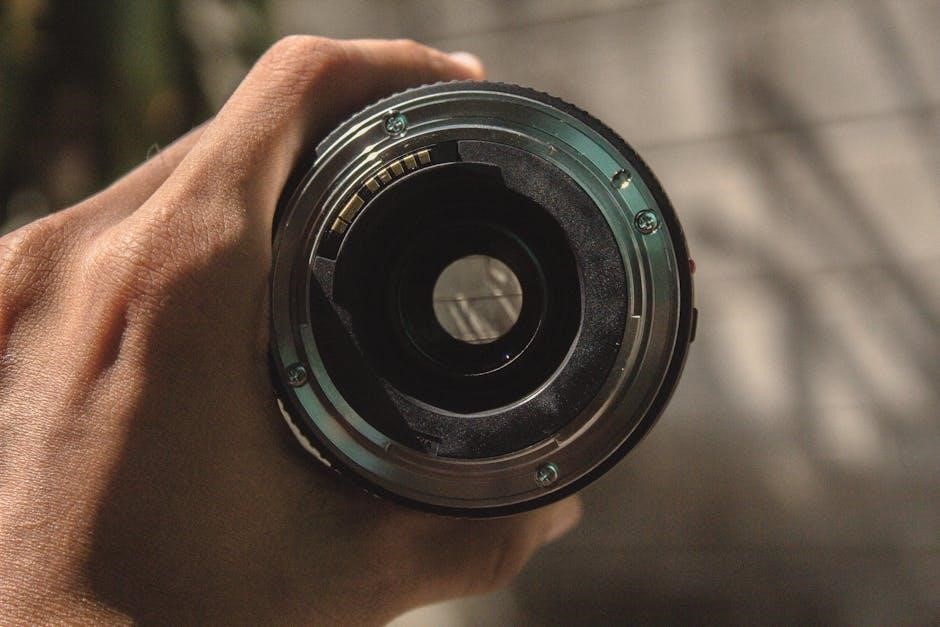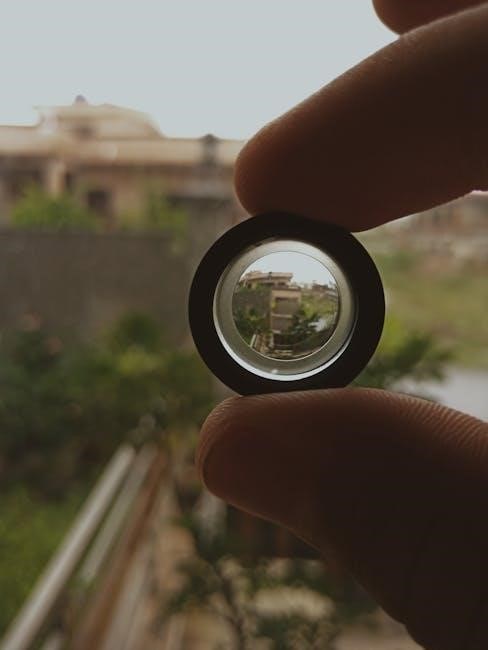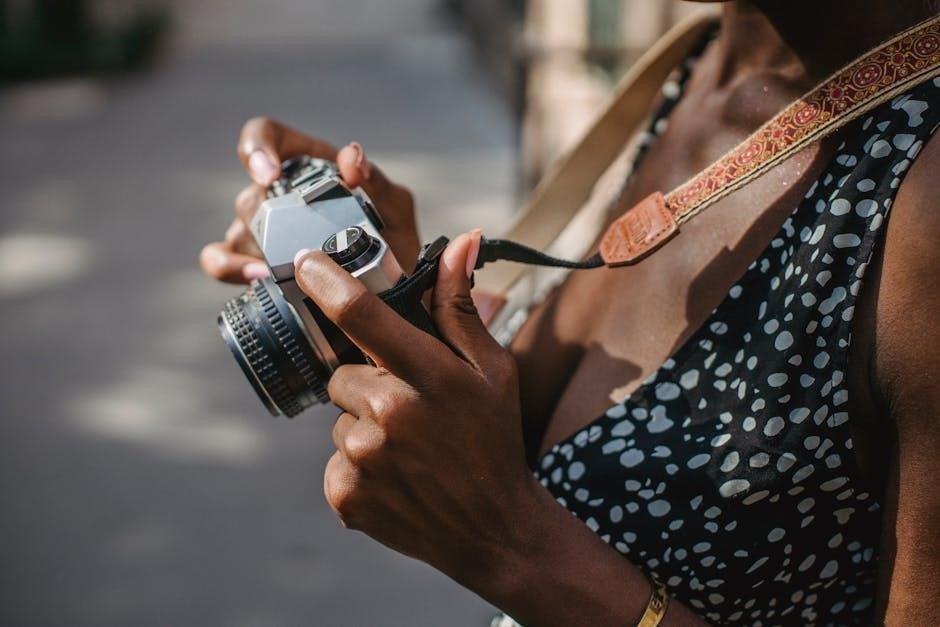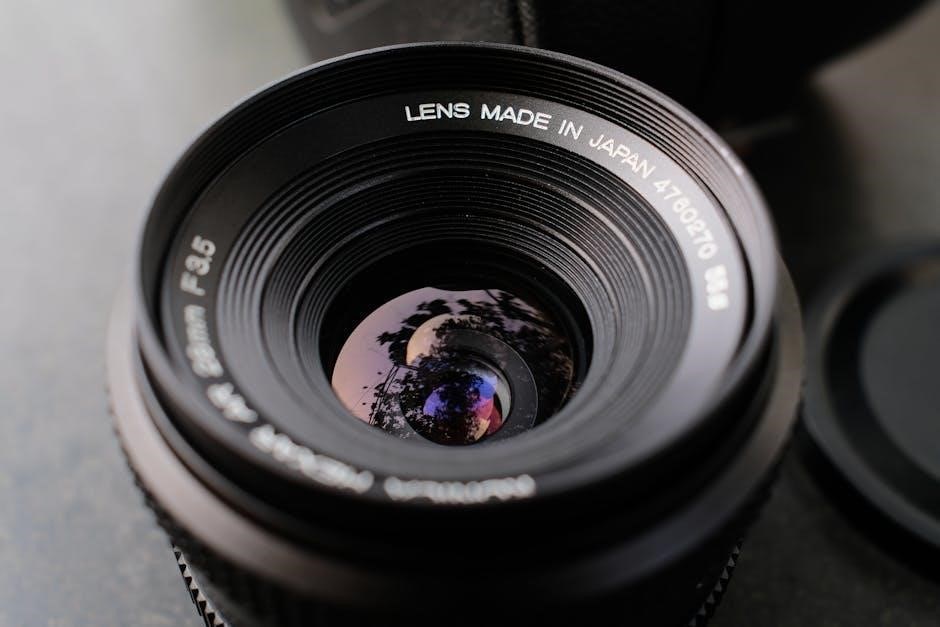A manual focus lens allows photographers to control focus and aperture manually, offering precision and creativity in both stills and video. Popular for their unique charm and versatility, these lenses enable enhanced artistic expression and are favored by many for their tactile shooting experience.
What is a Manual Focus Lens?
A manual focus lens is a camera lens that requires the photographer to adjust the focus and aperture settings manually, rather than relying on autofocus. It features a physical focus ring, typically located near the camera mount, which allows precise control over the point of focus. These lenses are popular for their tactile operation, creative control, and compatibility with various camera systems, making them ideal for both photography and videography applications.
Why Use a Manual Focus Lens?
Manual focus lenses offer precise control over focus and aperture, enabling photographers to achieve exact results. They are ideal for creative photography and videography, as they allow for enhanced artistic expression. The tactile experience of manual adjustment appeals to many, providing a unique shooting experience; Additionally, these lenses are often more affordable and durable than autofocus alternatives, making them a popular choice for photographers seeking versatility and creative freedom in their work.

Benefits of Manual Focus Lenses
Manual focus lenses provide precise control, enhanced creativity, and affordability. They often feature durable builds and unique optical qualities, making them ideal for photographers seeking artistic expression and value.
Complete Control Over Focus and Aperture
Manual focus lenses provide photographers with precise control over both focus and aperture, enabling them to achieve exacting results. The focus ring allows for fine adjustments, while the aperture control offers flexibility in managing light and depth of field. This hands-on approach ensures creative freedom, making it ideal for photographers who value precision and artistic expression. The tactile experience of manual adjustments enhances the overall shooting process, offering a more immersive connection to the craft.
Enhanced Creativity in Photography and Videography
Manual focus lenses unlock new levels of creativity, allowing photographers and videographers to experiment with unique visual styles. With precise control over aperture and focus, artists can craft distinct depth-of-field effects and light transitions. The tactile experience fosters a deeper connection to the craft, inspiring innovative compositions. Additionally, the ability to create smooth focus transitions makes these lenses ideal for cinematic applications, enabling storytellers to capture moments with unparalleled artistic expression and emotional impact.
How to Use a Manual Focus Lens
Using a manual focus lens involves adjusting the focus ring to achieve sharpness and the AF/MF switch to enable manual control. Practice enhances precision and creativity.
Understanding the Focus Ring and AF/MF Switch
The focus ring, typically located closest to the camera body, allows manual adjustment for precise sharpness. The AF/MF switch toggles between autofocus and manual modes. Turning the ring adjusts focus, while live view or focus peaking aids accuracy. Using these tools effectively enables better control over your images, making manual focusing easier and more intuitive with practice.
Techniques for Achieving Sharp Focus
To achieve sharp focus with a manual lens, smoothly turn the focus ring without jerking it. Use live view or magnify the preview for precise adjustments. Focus peaking aids in highlighting sharp areas, ensuring accuracy. Shoot in brighter light to see subject details clearly. Use a tripod for stability, especially in low light, and take your time to fine-tune focus. These techniques help master manual focusing and deliver razor-sharp images consistently.
Handling Shallow Depth of Field
Shallow depth of field emphasizes your subject by blurring the background. To manage this, use focus peaking to ensure your subject is sharp. Small apertures like f/8 or f/11 can slightly extend depth of field while maintaining a pleasing bokeh. A tripod is crucial for stability, especially in low light. Stop down to refine focus accuracy and experiment with composition to balance sharpness and blur. These techniques allow you to effectively control and leverage shallow depth of field for creative, professional results.

Popular Types of Manual Focus Lenses
Manual focus lenses come in various types, including ultra-wide angle for expansive views, macro for close-ups, tilt and shift for perspective control, and vintage for unique aesthetics.
Ultra-Wide Angle Manual Focus Lenses
Ultra-wide angle manual focus lenses, like the Meike 8mm F2.8, offer expansive views with minimal distortion. Ideal for landscape, architecture, and astrophotography, they capture broad scenes with precision. Their unique perspective enhances creativity, making them popular among photographers seeking dramatic compositions. The Laowa 15mm f/4.5, for instance, combines ultra-wide focal length with close-focusing capabilities for a distinctive look. These lenses are perfect for capturing vast environments and creating striking visual effects in both stills and video.
Macro Manual Focus Lenses
Macro manual focus lenses are designed for extreme close-up photography, capturing intricate details with precision. Lenses like the Venus Optics Laowa 25mm f/2.8 Ultra Macro offer 5x magnification, ideal for revealing textures, patterns, and small subjects. These lenses are perfect for nature, jewelry, and scientific photography, providing unparalleled detail. Their manual operation allows for precise control, making them a favorite among professionals and enthusiasts seeking high-quality macro imagery in both still photography and videography.
Tilt and Shift Manual Focus Lenses
Tilt and shift manual focus lenses offer unparalleled creative control, enabling photographers to manipulate perspective and focus planes. The tilt function allows selective focus, ideal for portraits or experimental compositions, while the shift function corrects distortions in architecture photography. Lenses like the TTArtisan Tilt 35mm f/1.4 are popular for their versatility, enabling unique artistic effects. These lenses are favored by professionals for their ability to deliver precise optical clarity and creative freedom in both still photography and cinematography.
Vintage Manual Focus Lenses
Vintage manual focus lenses are cherished for their unique character, optical charm, and nostalgic appeal. Many photographers and cinematographers favor these lenses for their distinct aesthetic, often described as “film-like” with warm, natural tones. Brands like Meike and Rokinon offer modern versions inspired by vintage designs, while original vintage lenses are sought after for their craftsmanship and timeless quality. These lenses often require cine-modding for modern use but remain popular for their ability to add a distinctive, artistic flair to photography and video projects.

Applications of Manual Focus Lenses
Manual focus lenses excel in portrait, street, and macro photography, offering precise control. They’re also ideal for astrophotography and landscape work, where focus accuracy is crucial.
Portrait and Street Photography
Manual focus lenses shine in portrait and street photography, offering precise control over focus and aperture. For portraits, they enable razor-sharp subject isolation and creamy bokeh. In street photography, their tactile nature enhances the immersive experience, allowing photographers to zone in on fleeting moments with accuracy. The ability to manually adjust focus ensures creative freedom, making these lenses a favorite for capturing dynamic, high-quality images in fast-paced urban environments and intimate settings alike.
Video and Cinematography
Manual focus lenses excel in video and cinematography, offering precise control over focus and aperture for smooth, professional transitions. Their tactile design allows filmmakers to make deliberate adjustments, enhancing creative expression. With manual focus, videographers can achieve exact focus shifts and maintain consistent depth of field, critical for dynamic storytelling. These lenses are particularly favored for their ability to create cinematic bokeh and unique visual effects, making them indispensable tools for modern filmmakers seeking artistic control.
Macro and Close-Up Photography
Manual focus lenses are ideal for macro and close-up photography, offering precise control over focus to capture intricate details. The Laowa 15mm f/4.5 lens, for example, combines ultra-wide focal length with close-focusing capabilities for unique perspectives. Manual focus allows photographers to achieve exact focus on small subjects, ensuring sharpness and detail. Additionally, manual lenses often feature smooth bokeh and minimal distortion, making them perfect for highlighting textures and patterns in macro shots, while enabling artistic control over the final image composition.
Astrophotography and Landscape Photography
Manual focus lenses are excellent for astrophotography and landscape photography, offering precise control over focus and aperture. Their wide apertures and manual adjustments allow for capturing detailed starry skies and vast landscapes with clarity. The smooth bokeh and minimal distortion in these lenses enhance the natural beauty of celestial and terrestrial scenes. Additionally, the tactile control enables photographers to achieve sharp focus on distant subjects, making them ideal for capturing the intricate details of both the night sky and expansive natural vistas with artistic precision and depth.

Modern vs. Vintage Manual Focus Lenses
Modern manual focus lenses offer advanced optics and weather sealing, while vintage lenses provide unique character and a nostalgic shooting experience, both appealing to different photographers.
Advantages of Modern Manual Focus Lenses
Modern manual focus lenses combine timeless appeal with cutting-edge technology, offering superior optical quality, weather sealing, and compatibility with contemporary camera systems. They often feature precise focus rings, minimal focus breathing, and advanced coatings for reduced flare and improved contrast. Many modern designs also include aperture control, enabling seamless integration with digital workflows. These lenses cater to photographers seeking both artistic control and technical excellence, making them ideal for professional and creative applications alike.
Charm and Unique Qualities of Vintage Lenses
Vintage manual focus lenses captivate photographers with their distinct character and timeless appeal. Known for their unique optical qualities, they often produce a warmer, more nostalgic aesthetic. The tactile experience of using vintage glass, with its precise craftsmanship, offers a satisfying shooting experience. Additionally, many vintage lenses are sought after for their bokeh, color rendition, and ability to add a distinctive look to images. Collectors and enthusiasts prize these lenses for their historical significance and artistic potential, making them a cherished part of photography culture.
Manual focus lenses offer unique qualities and creative control, appealing to both professionals and enthusiasts. Their tactile experience and distinctive results make them a timeless choice in photography.
Final Thoughts on Manual Focus Lenses
Manual focus lenses provide unparalleled precision and creativity, making them a favorite among photographers seeking control and unique results. While they require practice to master, their tactile experience and ability to produce distinctive effects make them a rewarding choice. Whether modern or vintage, these lenses offer a connection to the craft of photography, emphasizing skill and artistic vision. For those willing to embrace the challenge, manual focus lenses open doors to new creative possibilities and a deeper engagement with the medium.
Encouragement to Explore Manual Focus Photography
Manual focus photography offers a unique, creative experience that connects you deeply with your craft. It challenges you to slow down, think critically, and refine your skills. While it may seem intimidating at first, the rewards of precise control and distinctive results are well worth the effort. Embrace the journey of mastering manual focus lenses and discover the artistic freedom they provide. Whether for portraits, street photography, or videography, manual focus can elevate your work and inspire new creative heights.